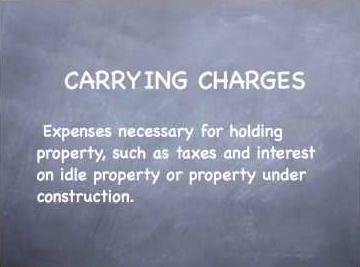In order to fully get the “error” in selling grain at harvest and then buying calls to replace that grain, so as to still participate in possible higher prices you need to understand how carrying charges work in the grain markets.
The definition of “carrying charges” is: an expense or effective cost arising from unproductive assets such as stored goods or unproductive assets; includes interest, insurance and storage costs.
Basis is the price difference between cash and the underlying futures contract (at a specific time), and to take it a step further you need to take a serious look at the price differences between futures prices in different delivery months (e.g., March and December corn). In commodities that are produced and storable seasonally such as wheat, soybeans, and corn, these price differentials between futures contracts in different delivery months are known as “carrying charges”.
Let’s look at current example of the carrying charge in the corn market based on the market close of June 18th 2015. There is nothing special about this day or year with the price structure showing a “positive carrying charge” (deferred contracts are trading at a premium to nearby contracts) and this is common for a number of planting, pre-harvest, and harvests over the last 20 years.
Corn Futures
- July15: 353 ¼
- Sept15: 358 ¾
- Dec15: 368 ¾
- Mar16: 379 ¾
- May16: 387 ¾
Why are these prices all different? Why is Dec15 corn worth 10 cents per bushel more than Sept15 corn, which is 5 cents more than July15 corn? All contracts represent the same grade (#2 yellow corn and all contracts call for delivery in the same form and location, shouldn’t they all have the same price?
Many Producers and Speculators alike have the belief that Dec15 corn trades at a premium to Sept15 corn because the trade expects prices to “rise” in the months going forward. However expectations have nothing to do with these differences in price. The primary reason for these price differentials is carrying charges, which are also known as storage costs. When supplies are large deferred contracts will trade at a premium to the nearby futures contracts, which is referred to as “Positive Carrying Charges”. These market-determined “carrying charges” are consistently sending signals and motivators to producers to store grain for sale at a later time, or to price their grain and ship it today. Also carrying charges communicate to merchandisers, exporters, and processors what the market is will to pay for storage. To get the full concept of carrying charges it is helpful to look at an opposite example or an “inverted market”
In an inverted market, which is opposite to a positive carry market, the nearby contracts will trade at a premium to the deferred contracts. Inverted markets come into action when supplies are small or there is a scarcity and the market is willing to pay a premium for delivery “now”. There is no incentive to hold onto stocks to sell at a later date.
Example of an inverted market:
Corn Futures:
- July15: 387 3/4
- Sept15: 379 ¼
- Dec15: 368 ¾
- Mar16: 359 ½
- May16: 351 ¼
Since the “Freedom to Farm” act passed in 1996, large carrying charges have become the norm, specifically in the corn market. This act brought in a new era concerning the government’s role and how they manage grain stocks. Today the free market (by way of carrying charges and inverses) signals producers on how much grain to store and where they should store it. How the markets have responded to large crops throughout the years has shown this new policy environment. Large stocks coupled with high demand for storage, carrying charges can be significantly large.
